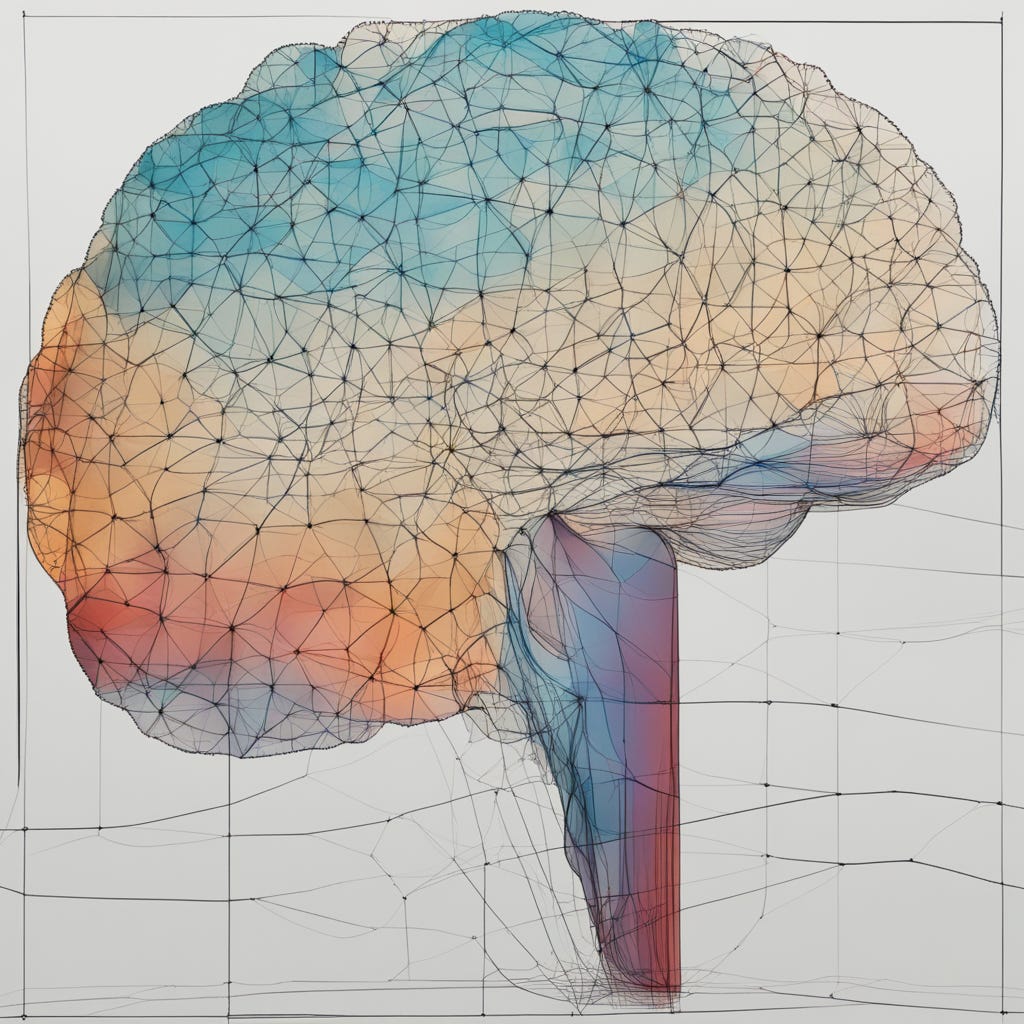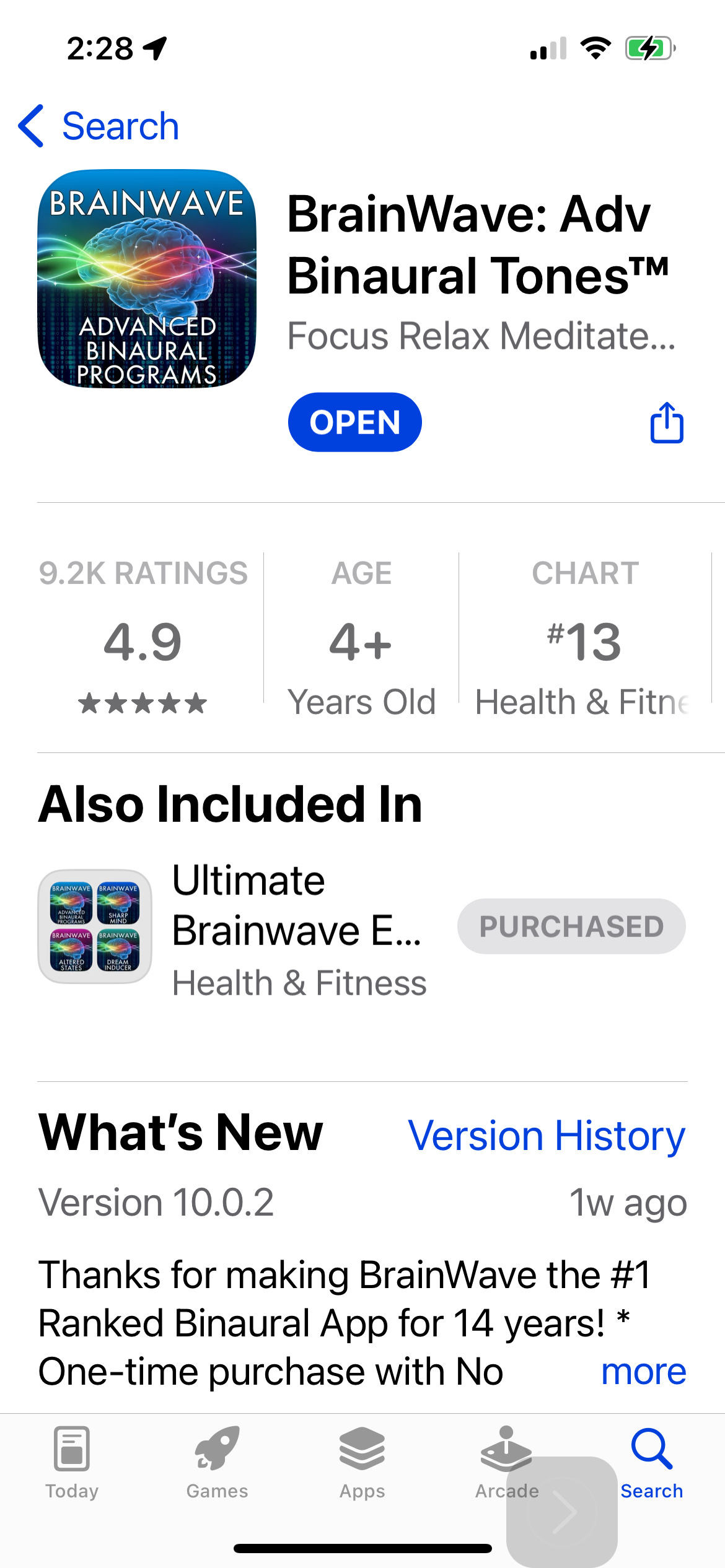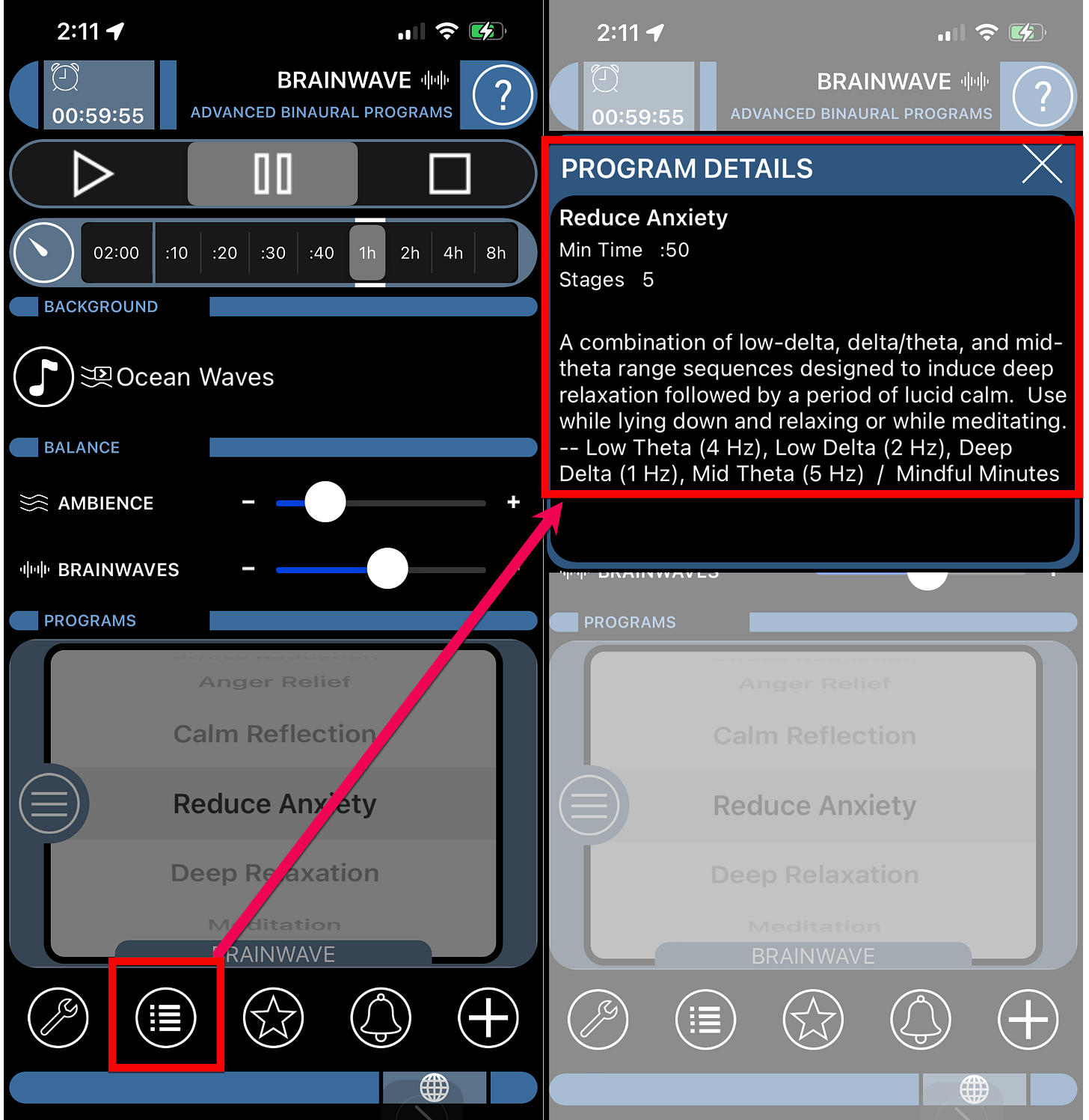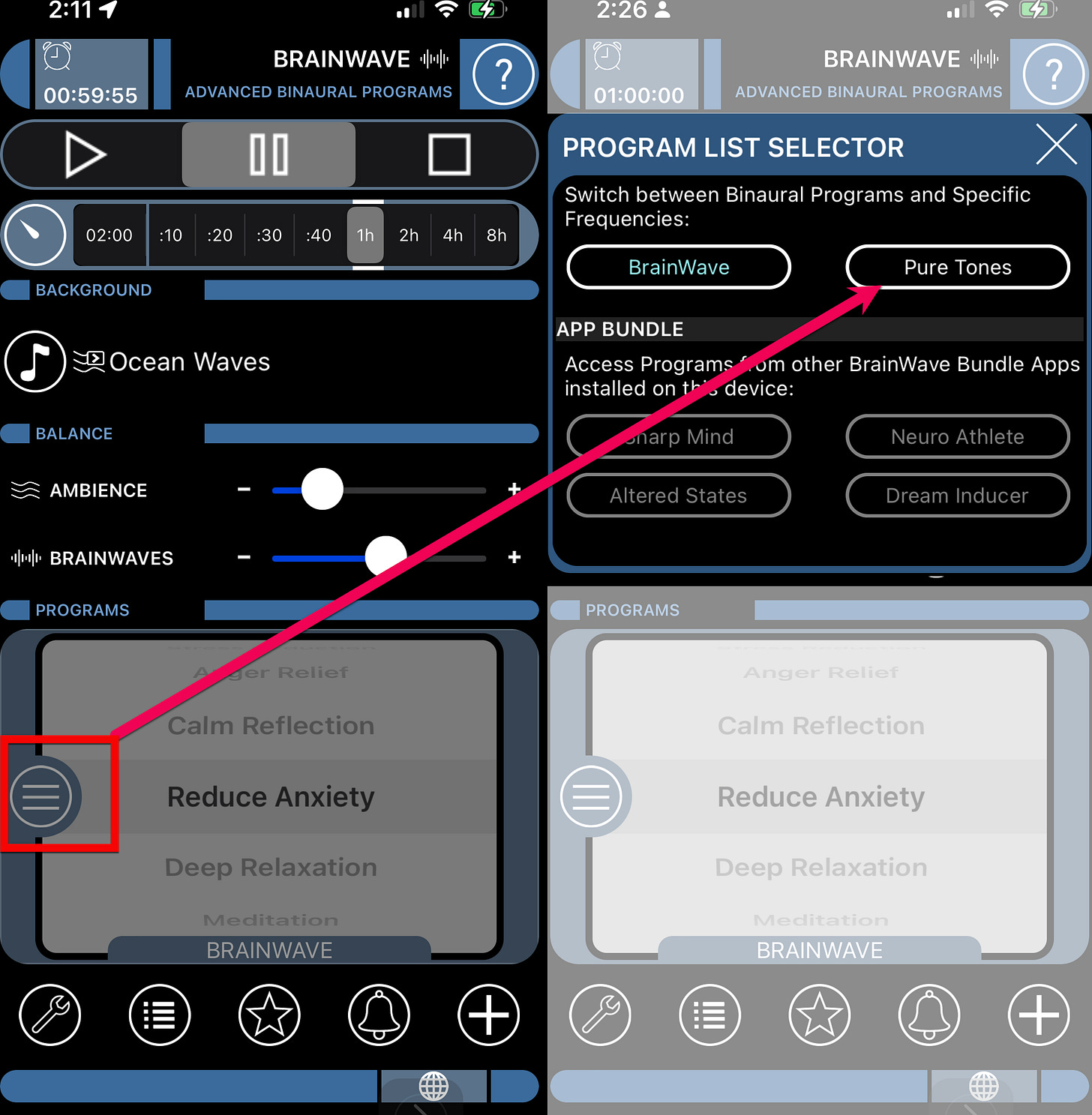Find Your Hz & Get Some Sleep
2023.10.13-Friday p.m. Check-in
What Are Binaural Beats?
“Binaural beats are a perception of sound created by your brain. If you listen to two tones, each at a different frequency and each in a different ear, your brain creates an additional tone you can hear. This third tone is called a binaural beat. You hear it at the frequency difference between the two tones.
For example, if you listen to one tone at 300 hertz (Hz) and the other tone at 310 Hz, the binaural beat you hear is at 10 Hz. The binaural beat can be heard if the frequency of each tone in your ears is less than 1000 Hz and the difference between the two tones is less than 35 Hz.”
I highly recommend visiting the Sleepfoundation.org page where I found the above. They go into some very clear demos and include citations to their research. Love it!
I mentioned in a previous post that I have a Binaural Beats app that I’ve used for at least 10 years.
Following up on some of the research into Vagus nerve stimulation through tone, I decided to reach out to the App Developer, Phil, and had a lovely conversation, parts of which appear below:
HEATHER: There’s been some research that stimulating the Vagus nerve can affect/improve some of the symptoms and some are indicating that sounds/vibrations play a role.
Do you have any idea what frequency would be the best to use?
Thank you so much for your help etc. etc.
PHIL: There are two approaches you could take, the first being to try to CALM the vagus nerve instead of stimulating it.
To calm it I would recommend the "Deep Relaxation" and/or "Alpha Relaxation" programs.
Deep Relaxation: Low-Delta and Delta/Theta range frequencies—Low-Delta (2Hz), Low Theta (4Hz), and Low Alpha (7Hz)
Alpha Relaxation: Low–Mid Alpha (8Hz), Mid-Alpha (10Hz)
You can augment this by practicing Box-Breathing as you listen while listening to the Ocean Waves background.
Another option for background audio is to listen to BrainWave while also listening to YouTube, which has a large number of long-running background tones including ones that use the "om" chant, the frequency of which is known to have a calming effect on the central nervous system. I frequently use YouTube audio for ambient backgrounds and there's so much useful content that it was worth it to subscribe to YouTube Premium so there are no commercials.
You can play BrainWave alongside other audio apps when its Background Mode is set to either "Ambience + Other" or "Other App".
To STIMULATE the vagus nerve I'd recommend using the "Gamma-40 Focus" program.
The 40 Hz gamma frequency has been the subject of a great deal of research and is currently being used to treat Alzheimer's and dementia.
The benefit of working on both stimulating and calming the vagus nerve is that over time you'll develop the ability to modulate its behavior in different directions depending on what you're experiencing.
For example, if you're experiencing a coughing fit, you'll want to modulate it to a calm state,
whereas if you're feeling lethargic you'll want to do the opposite.
Beyond helping with Long-COVID, developing this ability can help you gain the ability to influence other autonomic functions it controls such as stress, hunger, and mood.
HEATHER (next day):
Do you know if anyone has researched using Binaural beats for ME/CFS? There are several areas of crossover symptoms between CFS and Long-COVID.
Thank you again for your app. I used it all day after writing to you (deep relaxation) and it helped stop a headache/over-exertion per my Polar Monitor and the Visible app.
The hell with “better living through chemistry”! So far it’s all apps that are helping (and YouTube Premium—😉—we’ve canceled pretty much everything else but that in our home).
PHIL:
Most of the research over the last few years using binaural tones has been focused on the use of 10 Hz alpha waves to improve mood and the use of 40 Hz gamma waves to improve cognitive function. When it comes to treating specific conditions the research I've read has so far focused on improving cognition and sleep for people with early-stage dementia. I haven't read any studies looking into other applications yet, but I'm sure more studies will come because it's far easier to study the effects of various types of audio on humans than it is to develop and get approval to test new drug therapies.
I agree with you on the chemistry :)
My original inspiration for developing the first version of BrainWave back in 2008 was my own struggles with insomnia. Most of the medicines I had been prescribed made me extremely groggy but didn't actually make me fall asleep. The first program I wrote for BrainWave was "Power Nap”—Low-Delta (2Hz), Low Theta (4Hz), Mid Beta (20Hz)—and it put me to sleep on the very first test. It was a eureka moment—not just for the app, but for me, too—since I actually slept and woke up feeling amazing. You should give that program a try if you haven't already. There's also a "Gamma Power Nap" program that uses a 40 Hz gamma waking stage—Low Delta (2Hz), Deep Delta (1Hz), high Beta (30Hz), Gamma (40Hz).
The latest BRAINWAVE update also includes a new set of programs called "Pure Tones".
You can access those by tapping the button on the left side of the Program Dial, and then tapping the Pure Tones button.
This will load a set of 20 single-stage programs each targeting a specific frequency. This way, if you read about a specific binaural tone or brainwave frequency that you'd like to try you can access it there.
________
Phil also mentioned this, which I did not know:
If you haven't already, please consider writing a review for the app as that really helps to support it. Apple tends to promote subscription apps more than one-time paid apps so reviews (for a one-time purchase app) really help to keep it visible in the App Store rankings.
Good to know!








